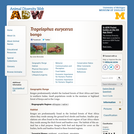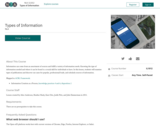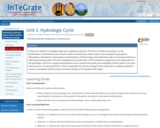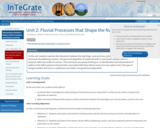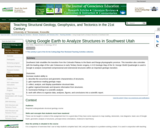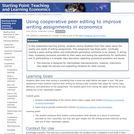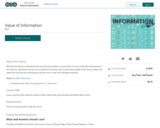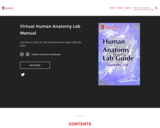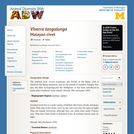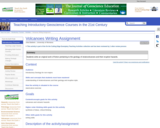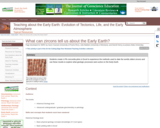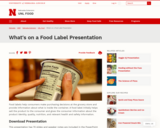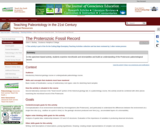A detailed two page Word document with activity instructions that can be tailored prior to handout. (Microsoft Word PRIVATE FILE 34kB Jun7 07)
Give students a synthetic data set (Excel PRIVATE FILE 38kB Jun7 07) of 206Pb/238U and 207Pb/235U isotope ratios. The data set will define two age populations (A and B) that can be assigned to either of the following scenarios. The data set is given to the students with the intention that Historical Geology level students will not be required to have advanced knowledge.
PART I: Data plotting
Students are to make concordia plots for use with the provided data sets (Excel PRIVATE FILE 38kB Jun7 07) using the plotting program Excel.
PART II: Data analysis
Data analysis. Experience the discovery of finding two age populations on a concordia plot. Discuss U-Pb concordance. Distinguish different populations using concordia diagram, discuss uncertainty in data.
PART III: Contextual basis
Introduce the two different scenarios (see below) for encountering the age populations A and B. Explore the implications of finding two different age populations within single grains from zircons in an igneous rock (i.e. zircon inheritance).
Explore the ability to discriminate different sedimentary components within a detrital population.
Explore what other aspects of zircon could be used to distinguish different age populations.
Question: What are you really dating when you analyze a zircon?
Two examples of the concept of multiple age populations:
Example 1: Discuss concept that zircons from an igneous rock can record multiple age populations (A and B) that result in grains with different age cores and rims. As a 'hook', illustrate this concept with images of well-known Early Earth examples, demonstrating that this exercise is a real-world problem.
Acasta gneiss zircons (images from S. Bowring)
Investigating the Jack Hills zircons (PowerPoint PRIVATE FILE 17.1MB Apr23 07) (images from A. Cavosie)
Wyoming province zircons (PowerPoint PRIVATE FILE 965kB Jun8 07) (images from D. Henry)
Example 2: Discuss concept of using zircon geochronology for sedimentary provenance. Use, as an example, two age populations (A and B, same data set as in ex. 1) of rounded detrital igneous zircons that end up in the same sedimentary rock. As a 'hook', illustrate this concept with images of well-known Early Earth examples
Field shots of Jack Hills siliciclastic sediments (images from A. Cavosie)
Field shots of Wyoming siliciclastic sediments (See #2 just above.)
Petrographic images (CL, BSE, TL, etc.) of the above.
Demonstrate that both Jack Hills and Wyoming zircons occur in siliciclastic rocks but are very different.
(Note: this resource was added to OER Commons as part of a batch upload of over 2,200 records. If you notice an issue with the quality of the metadata, please let us know by using the 'report' button and we will flag it for consideration.)
